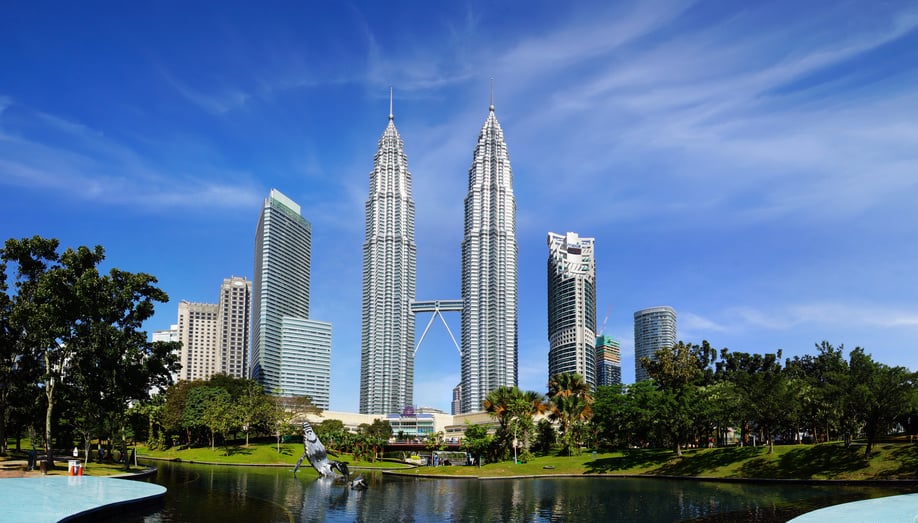In brief
On 22 February 2021, the Ministry of Industry and Trade of Vietnam (MOIT) released the draft proposal for the national power development plan for the period of 2021-2030, with a vision to 2045 (“Draft PDP8”) for public comments. This is the third version of the draft, which the MOIT prepared and updated in February 2021. The draft proposal includes an 843-page main explanatory report, with an addition of 174 pages of appendices.
Under the Master Planning Law and the notice from the MOIT, the draft proposal of PDP8 has been made available for public comments for a period of 30 days from the MOIT’s notice.
We set out below the key highlights of the draft PDP8 proposal.
In more detail
1. Proposed scale of power sources under Draft PDP8
The Draft PDP8 proposes the scale of power sources in the master planning period for different load development scenarios including two scenarios: (i) base-load scenario (Table I), and (ii) high-load scenario (Table II), as illustrated in the attached appendix.
2. Power capacity structure proposed under Draft PDP8
2.1 For the period of 2021 – 2030
- Coal-fired power: The power capacity structure will be changed in the direction of reducing coal-fired thermal power from 34% in 2020 to 27% in 2030. During this period, there will be no additional development of new coal-fired thermal power (other than the coal-fired power plants already under construction and under investment promoted for operation during 2021-2025.
- Gas-to-power: Power sources utilizing gas will be substantially developed from about 7 GW in 2020 to 13.5 GW in 2025 and 28-33 GW in 2030. The ratio of gas-to-power sources will be increased from 15% in 2020 to 21-23% in 2030.
- Wind power: Wind power will be substantially developed from the capacity of about 600 MW in 2020 to over 11-12 GW in 2025 and over 18-19 GW in 2030. The ratio of wind power capacity will account for 12% of the total installed capacity in 2025 and 13% of the total installed capacity in 2030.
- Solar power: Solar power will be developed from the capacity of about 17 GW in the period of 2020-2025 to about 19-20 GW in 2030. The ratio of solar power capacity will account for 17% of the total installed capacity in 2025 and 14% of the total installed capacity in 2030.
- Other sources: Along with the development of wind power and solar power, it is also necessary to construct power plants capable of flexible adjustments, battery energy storage, pumped-storage hydropower, ICE to ensure the stable operation of the power system with a high ratio of renewable power sources. The total capacity of these sources will reach 2.6-2.8 GW in 2030, accounting for nearly 2% of the total installed capacity.
2. 2 For the period 2031 – 2045
In terms of power capacity, the Draft PDP8 proposes as follows:
- Coal-fired power: The power capacity structure will be changed in the direction of reducing the ratio of coal-fired power source from 27% in 2030 to 17-18% in 2045.
- Gas-to-power: The ratio of gas-to-power source will be gradually increased from 21-22% in 2030 to 24-25% in 2045.
- Hydropower: The ratio of hydropower will also be reduced (because currently, the potential for hydropower has nearly been exhausted).
- Renewable power: Solar and wind sources will be substantially developed in the future, with the ratio of capacity reaching over 42% in 2045. The ratio of renewable energy sources (including large-scale hydropower) will reach 53% of the total capacity in 2045.
With regard to the power generation mix/structure, the Draft PDP8 proposes as follows:
- Coal-fired power: The ratio of coal-fired thermal power will gradually be decreased from 40% in 2030 to about 30% in 2045.
- Gas-to-power: The ratio of gas-to-power will be gradually increased from 24-26% in 2030 to over 28-30% in 2045.
- Renewable power: The ratio of renewable power sources (including large-scale hydropower) will ensure meeting the targets set out under the Politburo’s Resolution No. 55-NQ/TW dated 11 February 2020 and the Vietnam renewable power development strategy (approved by Decision No. 2068/QD-TTg dated 25 November 2015).
In addition, the Draft PDP8 notes that the demand of coal import for power generation will increase from 47-52 million tons in 2030 to 75-96 million tons in 2045, subject to the base-load or high-load scenarios.
For LNG import, the demand of importing LNG for power generation will increase from 10-13 million m3 in 2030 to 32-42 million m3 in 2045.
3. Comparison of the Draft PDP8 and the amended PDP7
In comparison with the Amended PDP7, until 2030, the power source development program of the PDP8 will have the following key major changes:
- developing solar and wind power sources in large scale (with the capacity of wind power sources will be tripled and the capacity of solar power will be doubled in comparison with the capacity under the amended PDP7);
- only continuing to develop ongoing coal-fired thermal projects currently under construction and under investment promoted for operation during the 2021-2025 period; and
- developing more gas-to-power sources utilizing LNG (combined cycle gas turbines) in the northern region and flexible sources (ICE) in both northern and southern regions.
Specifically, Table III in the appendix demonstrates a comparison of the scale of power sources in the PDP8 and the amended PDP7.
The key differences between the amended PDP7 and the PDP8 for the period of until 2030 are as follows:
- Renewable energy: The ratio of renewable energy (excluding hydropower) in the PDP8 has increased to almost 30% in 2030, while such ratio in the amended PDP7 was only at 16.3%. The major changes include: until 2030, onshore and near-shore wind power will develop an additional capacity of 9 GW, and offshore wind power will develop an additional capacity of 2-3 GW, solar power will develop an additional capacity of 7 GW, biomass power will be reduced by 0.5 GW, and small-scale hydropower will be reduced by 1.8 GW.
- Coal-fired power: The PDP8 will change the ratio of coal-fired thermal power to 27% with a 16% decrease compared to such ratio in the amended PDP7. About 18 GW of imported coal-fired thermal power projects approved under the amended PDP7 will be delayed until the period after 2030 or will not be included for consideration. The Draft PDP8 also lists specific names of such coal-fired power projects.
- Gas-to-power: The PDP8 increases the ratio of gas-to-power to 21% with a 6% decrease compared to such ratio in the amended PDP7. In the PDP8, there is a plan to construct an additional 5 GW combined cycle gas turbine source utilizing LNG in the northern region, 500-700 MW flexible source (ICE) in the Northern region and 900 MW of ICE in the Southern region. Under the Draft PDP8, it is noted that due to the fact that power load in Southern region is projected to have a lower growth in comparison with the amended PDP7 and that the solar and wind power sources have substantially developed in the southern region, it is necessary to consider to delay the project schedule of about 6.5-2.5 GW of combined cycle gas turbines sources utilizing LNG (depending on whether the base-load or high-load scenario will be applied) among the total capacity of 14.5 GW approved for the Southern region after 2030.
4. Required capital investments for PDP8
Under the Draft PDP8, there will be significant capital required for investments in the power plants and grid systems proposed in the PDP8, specifically:
- For the 2021-2030 period: The total investment capital for the 2021-2030 period will be about USD 128.3 billion, of which USD 95.4 billion will be for power generation/source/plants and about USD 32.9 billion will be for power grids. The average investment capital structure for power generation/source and for the power grid will be 74/26. As such, for the 2021-2030 period, the average annual investment capital required will be about USD 12.8 billion, of which USD 9.5 billion will be for power generation/source/plants and USD 3.3 billion will be for power grids.
- For the 2031-2045 period: The total investment capital for the 2031-2045 period will be about USD 192.3 billion, of which USD 140.2 billion will be for power generation/source/plants and USD 52.1 billion will be for power grids. The average investment capital structure for power generation/source/plants and for power grids will be 73/27. During the 2031-2045 period, the average annual investment capital will be about USD 12.8 billion, of which USD 9.3 billion will be for power generation/source and USD 3.4 billion will be for power grids.
5. Mechanisms proposed for implementing PDP8
In the Draft PDP8 report, the MOIT proposed the following key mechanisms in order to implement the PDP8:
- amending the Electricity Law to meet the requirements of power development in the new period, including: creating favorable conditions for attracting investment capital in the entire society and ensuring the operation of the power system with highly integrated renewable energy sources; developing and passing a comprehensive law on renewable energy in order to create a stable and sustainable legal framework for the investment and operation of renewable energy, and developing the supply chain;
- improving the formation and operation to develop a competitive power market;
- developing new mechanisms for power development and investment for ensuring the implementation of the plan, and the mechanism for handling new supplementations into the PDP8 after being approved;
- developing new mechanisms to attract investments and capital mobilizations;
- developing mechanisms to ensure the operation of the power system and power market in the system with highly integrated renewable energy sources.
6. MOIT’s recommendations for implementing PDP8
In the Draft PDP8 report, the MOIT recommended to the government the implementation of the following actions:
- allowing the commencement of the development of the plan for power generation/source and transmission grid development in short- and medium-term on an annual or two-year basis (This is recommended to form the basis for the governmental agencies to organize the tendering process for selecting investors of power projects.);
- submitting to the National Assembly an amended Electricity Law, which allows flexibilities to meet the requirements of power development in the new period of creating favorable conditions to attract investment capital in the entire society, especially capital sources from local private sector and foreign investment capital in the power development;
- proposing that the Ministry of Industry and Trade develop a market of capacity and competition on flexibility for providing the flexible and back-up sources for the power system; considering amending the legal regulations on transmission systems, and the regulations on the operation of the power market in line with the system highly integrated with renewable energy sources and the development of clean power sources (including LNG); and
- proposing that the government require the local authorities (where there are power facilities, especially 500 kV and 220 kV substations and transmission lines) to have responsibility in land clearance for the power facilities, creating favorable conditions for investors to implement their projects in due course.
7. List of potential gas-to-power projects in PDP8
The draft PDP8 report provides for a list of potential gas-to-power projects, as detailed in Table IV in the attached appendix.
8. List of potential offshore wind power projects in PDP8
The draft PDP8 report provides a list of potential offshore wind projects, as detailed in Table V in the attached appendix.




